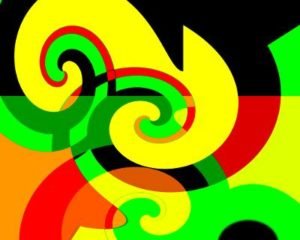
Sometimes I am asked to compare current artwork to pieces of the last few years. I can only do so in the most general terms: the images of my newer digital paintings may be a little sharper and colors dance a bit more. But such changes are not magic or part of a grand scheme, simply more experience and better insight, i.e, diligence and luck.
I consider my paintings as “emotional landscapes.” I have a penchant to use color and shapes as atmospheric perspective. I want the viewer to be surrounded by them, then to breathe them in. Traditional linear perspective, to me, is too cold and creates distance.
I still use Gimp, an open source art program, to create my digital paintings. On a blank digital canvas, I start by laying in broad color fields or basic shapes. I will add layers, move layers, change directions, change colors, focus on one area and develop it—whatever it takes to find or create an image that matches my feelings and impulses. It may take 20-30 steps to create a piece, or it may take 200-300 steps.
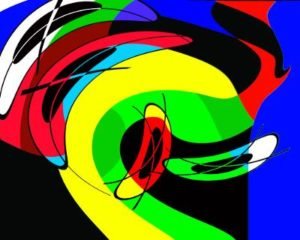
Actually, dates of creation can be a bit fuzzy, since I often rework a piece, so they sometimes are a combination of the old and the new. And with many artists, time is circular, not linear. Specific “periods” only exist to outside observers. If artworks are akin to children, it would be neither prudent nor fair to say the oldest child is “ugly or incomplete” while the youngest is “beautiful and perfect.”
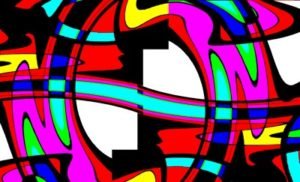
To me, art is as natural and necessary as breathing, so talking about it is akin to holding one’s breath. But yes, there are patterns and habits to creating art and within the art created, just as there are regular patterns to how we breathe. And just as breath can be ragged or rushed, calm or excited, so can be art and its making.
Being a bit obsessive-compulsive, I tend to strive for balance and order. Or is it the other way around? I need balance and order, so become a bit OCD, often repeating themes (crosses, masks, totems, or isolated figures) or compositional elements such as organic shapes, bold color contrasts, and outlining.
I like images that are direct, bold and straight forward, but will make patterns which are deceptive in their innocence, that shift and morph into multiple perspectives. Or I will create pieces where colors seem airy and abstract, but coalesce into shapes and shapes into images. In Reaching into Night, the female figure is both born of the red color field, and it also extends from her. In Moon Sonata, it first appears that the blue moons are the central and only focus. But on further look, a central mask appears, two women facing opposite directions lean against the dark blue, but also are part of the giant shadow of female form, and the green abstract arrows become two haunting eyes in the darkness.
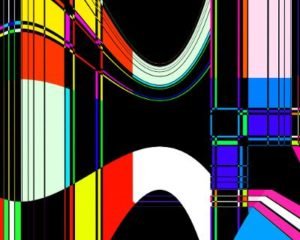
One thing I have noticed in the last year, something that has always been there but has become more prominent, is the use of black for contrast and to indicate indefinite or endless space. Shapes are bounded or bordered by black or merge or melt into black. Images float on a black sea or rush towards a dark night.
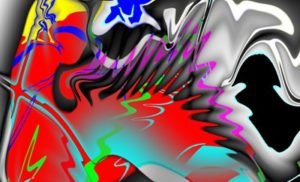
I have always been a bit of a skeptic and a borderline agnostic. I do not know what we can or do know, or if what we know is really that expressive, important, or relevant. And as a child I wondered, and maybe I still do, what would be or could be if eternity and infinity ended.
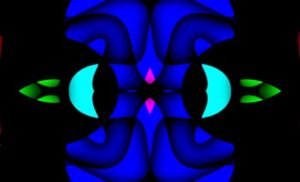
And questions of faith are squeezed in there somewhere. In the pattern of days and nights, it seems we are light surrounded by two darknesses, but if the starting, or comparison, point is changed, we become light on either side of darkness.
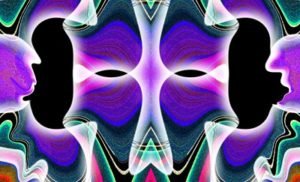
Both art and music deal with space and time, with rhythm and movement. Just as a composer will create different works within a strict form or framework, so can the visual artist. The point, or the hope at least, is that the finished piece transcends the framework or compositional elements.

Share this post with your friends.

